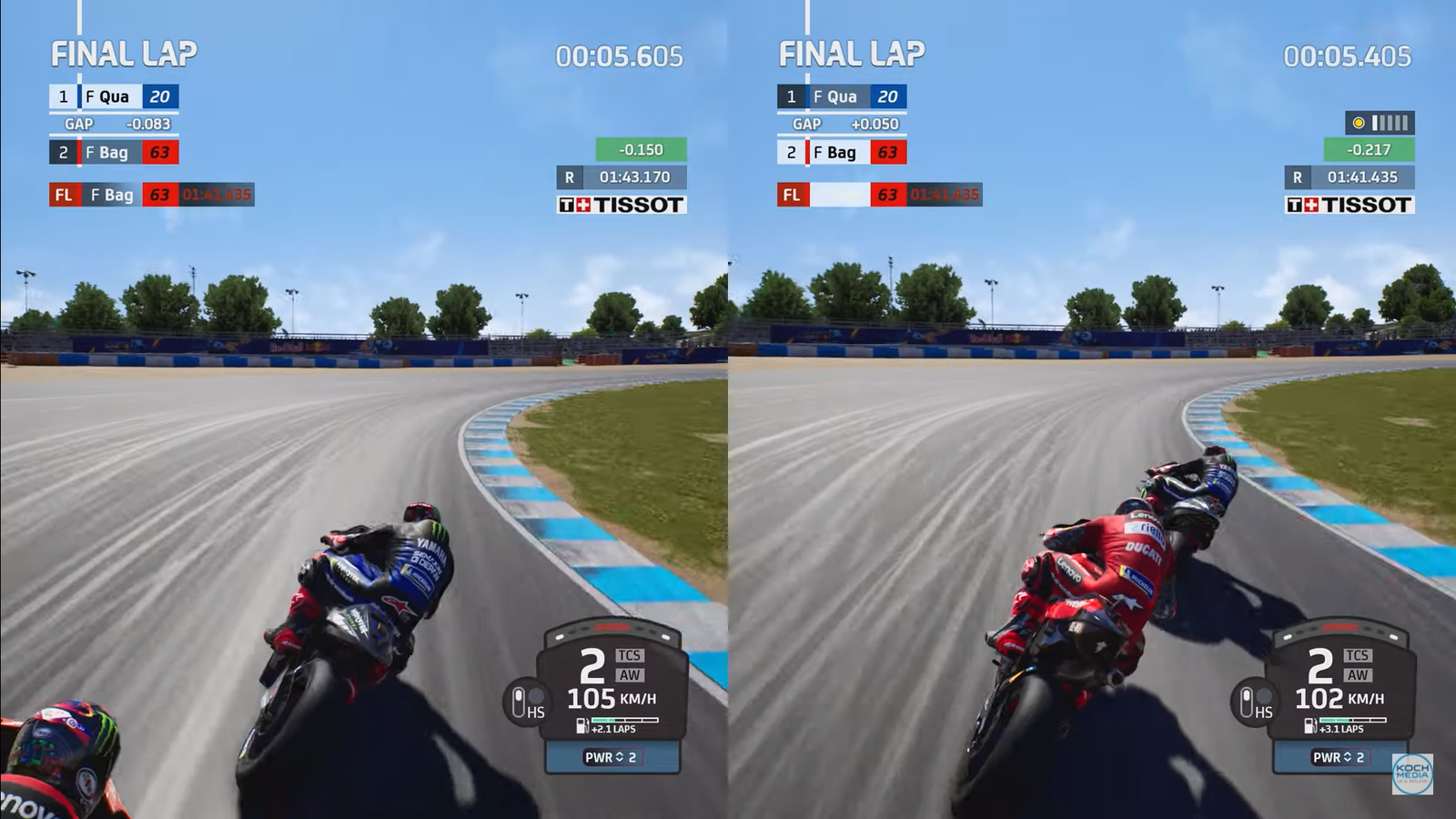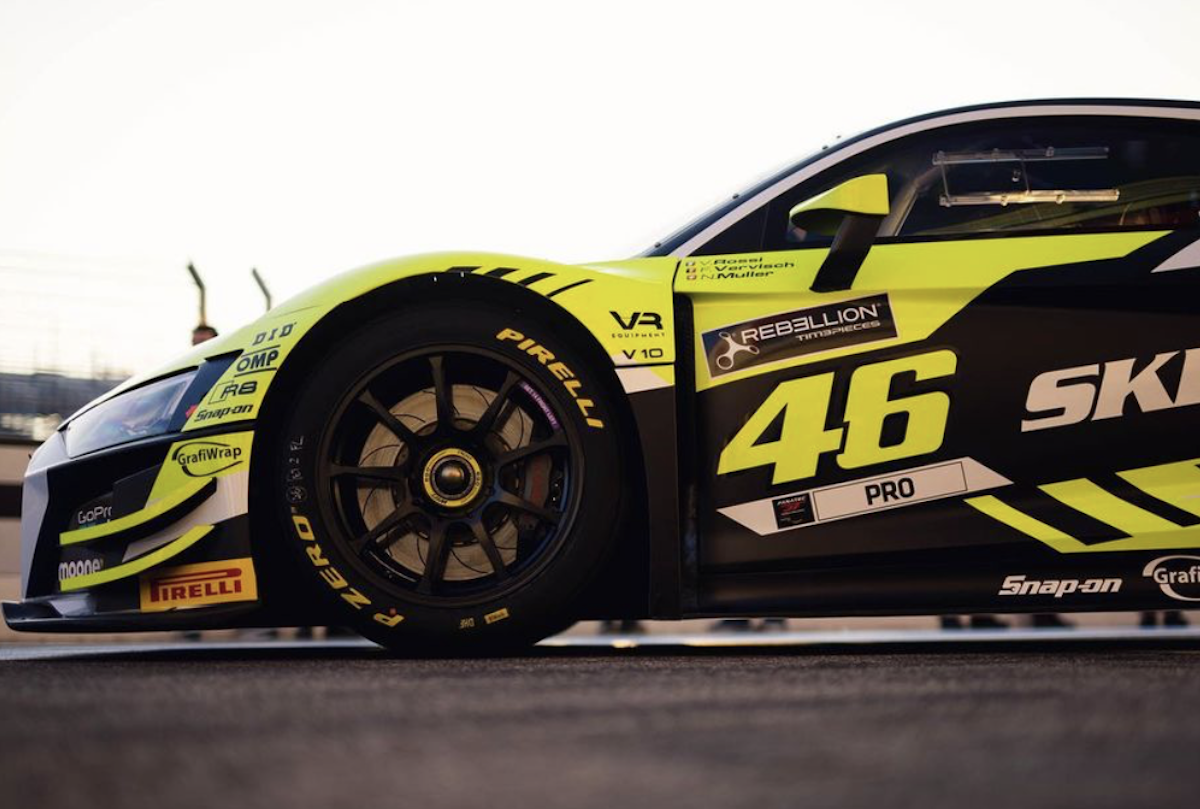New MotoGP 22 gameplay showcases split-screen mode
New footage of the 2022 MotoGP videogame has been released, showcasing the game’s split-screen mode.
.png?width=1600&aspect_ratio=16:9)
THE developers of the official MotoGP videogame, Milestone, have today released new footage of the 2022 game, MotoGP 22. The footage is captured on new-generation consoles, although it is not specified whether a PlayStation 5 or Xbox Series X was used for the footage.
Apart from the obvious split-screen element of the footage - a new feature for 2022 - the most obvious thing that stands out is the ‘holeshot device’ graphic.
.png?width=1600)
Holeshot devices have been used in MotoGP since 2019 when Ducati introduced it in preseason testing. By the end of 2019, it was being tested as a ride height adjuster for use throughout a lap or race, and now in 2022 every MotoGP factory has a ride height adjuster that is used at the grid, as well as during the race.
MotoGP 22 will be the first game in the series that replicates the effect of the holeshot device or ride height adjuster in-game, and its presence is notable by the ‘HS’ graphic on the HUD. It is not clear how the holeshot device actually works in-game yet, though, as the graphic remained the same throughout the gameplay, indicating the device was not used.

While the holeshot device graphic has been added to the HUD, the throttle and brake ‘telemetry’ graphics appear to have disappeared, and from the gameplay it is unclear how it is possible to cycle between displays to see tyre condition. For example, in the gameplay, the display remains on the fuel consumption screen throughout.
On that, it is notable that, of the two bikes shown in this gameplay, the Yamaha has less fuel than the Ducati. Whether that means the Ducati is easier on fuel than the Yamaha, or that it simply was fuelled heavier at the start of the race, is unclear.
Additionally, only the power map option was displayed on the graphic - the players never cycled to the traction control, anti-wheelie or engine brake options. So, while the power map stayed at ‘2’, it is unclear which engine brake, anti-wheelie or traction control settings were used. There was a notable lack of sliding, which perhaps indicates a relatively high traction control setting. That could also explain the low amount of interjection from the anti-wheelie, or alternatively that could be down to some aggressive rear brake use on corner exit, but since there is no brake telemetry it is difficult to tell (although, the right foot of both in-game riders does not move a great deal).
One of the new features of the physics for this year’s game is re-modelled suspension, which is supposed to allow for a more accurate feeling when riding over kerbs. Of course, MotoGP riders often use the kerbs around a race track, although they also often avoid them since speed, lean angle and the severity of the kerbs all come into whether a particular kerb can be used or not. Certainly, in the recent games, it could be argued that the kerbs have been too aggressive, and they definitely seem to upset the bikes less in this gameplay, taken from Jerez.
.png?width=1600)
The kerbs in Jerez are some of the flattest and ‘usable’ in real life MotoGP, so it will be interesting to see gameplay from somewhere like Barcelona, Texas or Portugal where the kerbs in real life seem to be more rough, or at least relative to other Grand Prix tracks. But, in general, it is difficult to tell what the kerbs will feel like without playing the game yourself, so for certainty we will have to wait.
The same could be said to judge some of the other new features for this year’s game, such as the new tyre deformation model, and the track surfaces which have been reworked for the 2022 game to offer “better rideability,” according to a press release by Koch Media.
MotoGP 22 will be released on 21 April 2022 on the PlayStation 4, PlayStation 5, Xbox One, Xbox Series X and S, Nintendo Switch and Steam.

